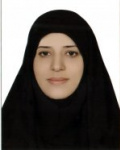| نویسندگان | .Arefi Tork Abadi, M., Toluei, Z. and Hosseani Tafreshi, SA |
|---|---|
| همایش | The first intenational conference of Rosa damascena |
| تاریخ برگزاری همایش | 2018-11-03 - 2018-11-05 |
| محل برگزاری همایش | 1 - کاشان |
| ارائه به نام دانشگاه | دانشگاه کاشان-پژوهشکده اسانس |
| نوع ارائه | سخنرانی |
| سطح همایش | بین المللی |
چکیده مقاله
Introduction: Rosa damascena Mill. from Rosaceae family, is a unique species. One of the major and popular growing regions of damask rose is Kashan and its rose essential oil has unique scent and global reputation. Methods: In this study, 15 populations of Rosa damascena Mill. were collected from important rose oil production regions of Kashan, Iran. In order to evaluate morphological variation, 52 quantitative and 17 qualitative morphological characters were measured. The essential oil content (w/w) of flowers was assayed after extraction in Clevenger apparatus (1). The chemical composition of essential oil was analyzed by gas–chromatography coupled with mass spectrometry. Results: Cluster and Principal component analysis (PCA) of morphological characters showed that the fifteen populations could be divided into two major groups including five subgroups. The variance analysis showed significant differences (P<0.01) among populations of Rosa damascena for 28 morphological characters such as stem length, Leaf length and number of flowers per plant. Rosa damascena population from Azaran (valley) produced the highest content of absolute oil (0.019% w/w), while the lowest value of absolute oil (0.002% w/w) belonged to Eznaveh population. Correlation results showed that there is a significant relationship between some morphological characters and essential oil content. Stipule length had a significant positive correlation with the essential oil content, while a significant and positive correlation was observed for peduncle length and receptacle glandular length with the essential oil content. Based on the resulted dendrogram from cluster analysis of chemical component data, fifteen R. damascena populations grouped into four clusters. A total of Sixty-five compounds were identified and quantified by GC–MS analysis in the rose oil. The major components of the oil contained limonene (0.4–12.8%), 2-phenylethyl alcohol (1.0–1.3%), citronellol (16.2–57.8%), geraniol (0.9–14.1%), methyleugenol (0.5–2.5%), heptadecane (0.8–3.0%), 1-nonadecene (2.1–7.5%), nonadec-9-ene (14.9–30.2%), eicosane (1.0–3.3%), heneicosane (5.8–18.6%), tricosane (0.9–5.2%) and pentacosane (0.3–2.1%). Discussion: The essential oil of Josheghan was considered to have a high quality in terms of richness in citronellol, geraniol and 2-phenylethyl alcohol monoterpenes which has good potentials as antioxidant and strong fragrance in cosmetic and pharmaceutical industry. References: (1) Clevenger, J. F, 1928. Apparatus for the Determination of Volatile Oil. J. Am. Pharm. Assoc., 17: 346p.
